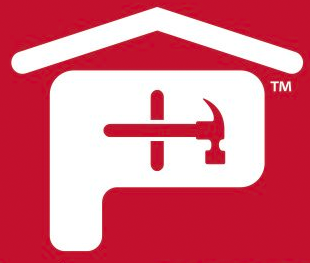In a perfect world, every residential wall assembly would be constructed completely dry. The building materials would be moisture-free. It wouldn’t rain during construction, and relative humidity would always be low during the construction phase. Unfortunately this is never the case. Walls get wet. And they continue to get wet. They get wet from the inside. They get wet from the outside. They even start out wet. And without a way to dry, it’s only a matter of time before the moisture condenses within the wall and leads to mold, mildew, peeling paint or worse.
Condensation
Condensation occurs when the temperature of a surface falls below the dew point. In cold climates, the cold inside surface of the OSB sheathing (since it has very little insulating value) comes into contact with warm, moisture-laden air from the building interior. If the sheathing is below the dew point, determined by humidity levels and air temperature, condensation occurs on the inside of the sheathing, putting the sheathing, studs and insulation all at risk. The same occurs in warm climates in the summer when warm, humid air comes in contact with the cooler, interior surfaces. The key is to control the temperature of the exterior sheathing so it doesn't condense in the first place.
At first glance, 2x6 construction may seem the easy choice to improve thermal efficiency as it's very close to how builders have been building for decades. However, it can exacerbate the issues since batt insulation is often not installed correctly. In the larger space it can shift and settle over time, creating uneven areas, or areas that have little or no insulation. Or installers squeeze more insulation than necessary into the cavity decreasing the overall thermal performance of the insulation. The potential for condensation may be reduced but so is the overall thermal performance of the building.
Continuous Insulation
A continuous layer of insulation, usually installed outboard of the structure, eliminates the condensation obstacle. When the sheathing is enhanced or replaced by rigid foam board continuous insulation (CI), it keeps the building heat (or coolness in warmer climates) inside the house. The interior wall cavity is kept at a more consistent temperature reducing the threat of condensation.
By adjusting the amount of foam on an exterior wall, the builder can move the dew point to occur either inside the foam, where condensation cannot take place; or outside of the foam, where it drains down the face of the foam. This, along with an effective air barrier of either the foam itself or other methods, can help the exterior wall assembly and house be more efficient than the 2x6 method and have less condensation potential.
Using CI also allows the temperature in the wall cavity to rise and promote drying towards the interior, humidity controlled, side of the wall. In this way, moisture that gets into the wall during construction, leakage, or other source has a natural pathway to dry.
Building science has proven conclusively that CI is the most effective way to insulate for moisture management. It's time to rethink CI for the future because a protected, thermally efficient building is a durable building. Builders that set the pace for the industry, and raise the bar for others to follow will find themselves in an advantageous position as building codes continue to tighten for energy efficiency.



 Gear!
Gear! PRO LOGIN
PRO LOGIN